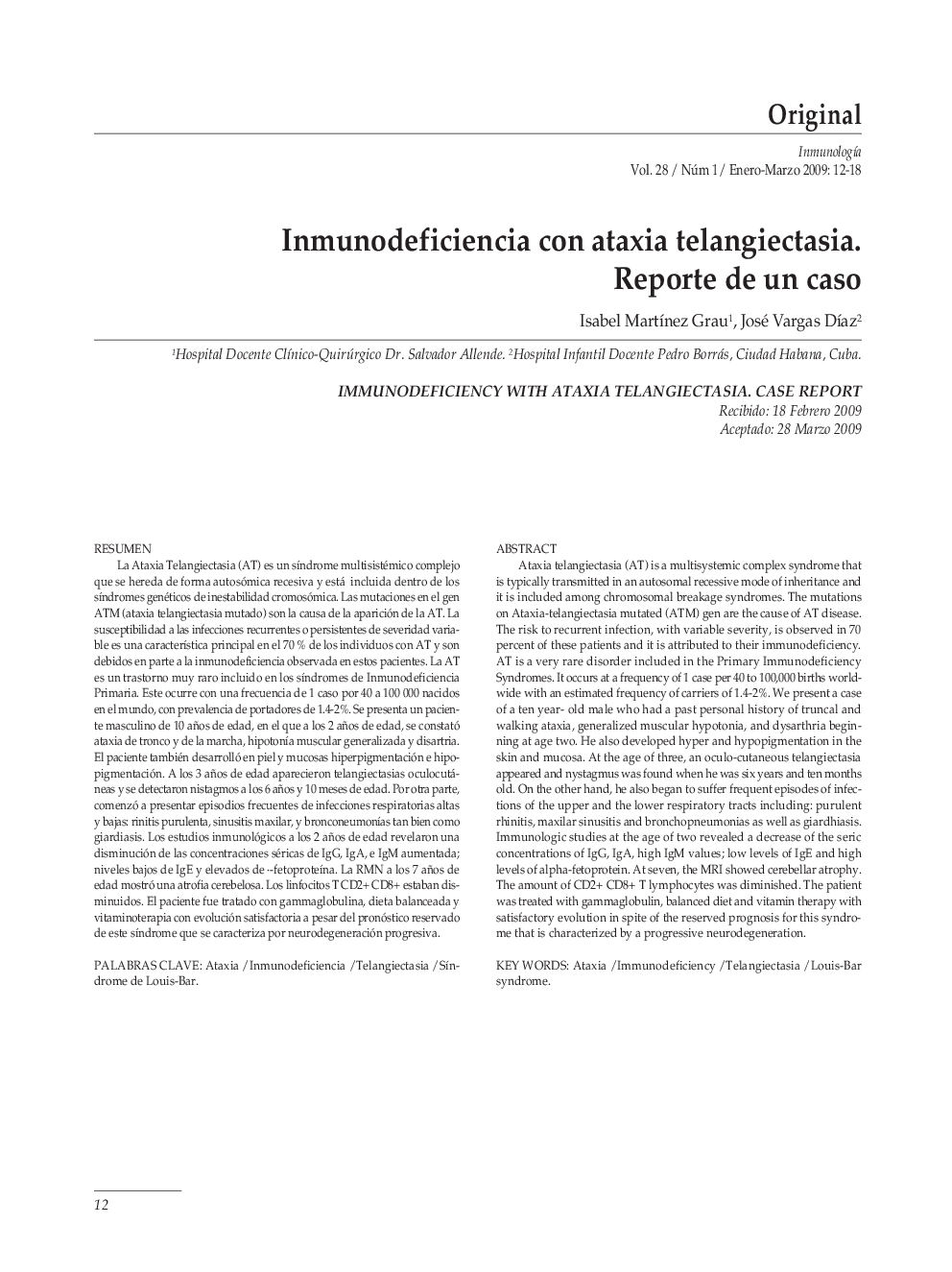| Article ID | Journal | Published Year | Pages | File Type |
|---|---|---|---|---|
| 3358333 | Inmunología | 2009 | 7 Pages |
Abstract
Ataxia telangiectasia (AT) is a multisystemic complex syndrome that is typically transmitted in an autosomal recessive mode of inheritance and it is included among chromosomal breakage syndromes. The mutations on Ataxia-telangiectasia mutated (ATM) gen are the cause of AT disease. The risk to recurrent infection, with variable severity, is observed in 70 percent of these patients and it is attributed to their immunodeficiency. AT is a very rare disorder included in the Primary Immunodeficiency Syndromes. It occurs at a frequency of 1 case per 40 to 100,000 births worldwide with an estimated frequency of carriers of 1.4-2%. We present a case of a ten year- old male who had a past personal history of truncal and walking ataxia, generalized muscular hypotonia, and dysarthria beginning at age two. He also developed hyper and hypopigmentation in the skin and mucosa. At the age of three, an oculo-cutaneous telangiectasia appeared and nystagmus was found when he was six years and ten months old. On the other hand, he also began to suffer frequent episodes of infections of the upper and the lower respiratory tracts including: purulent rhinitis, maxilar sinusitis and bronchopneumonias as well as giardhiasis. Immunologic studies at the age of two revealed a decrease of the seric concentrations of IgG, IgA, high IgM values; low levels of IgE and high levels of alpha-fetoprotein. At seven, the MRI showed cerebellar atrophy. The amount of CD2+ CD8+ T lymphocytes was diminished. The patient was treated with gammaglobulin, balanced diet and vitamin therapy with satisfactory evolution in spite of the reserved prognosis for this syndrome that is characterized by a progressive neurodegeneration.
Related Topics
Life Sciences
Immunology and Microbiology
Immunology
Authors
Isabel MartÃnez Grau, José Vargas DÃaz,
